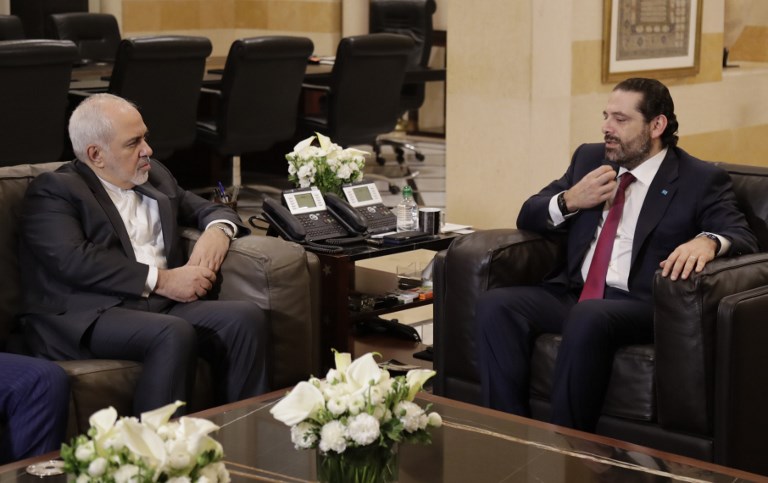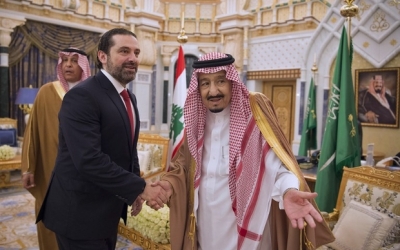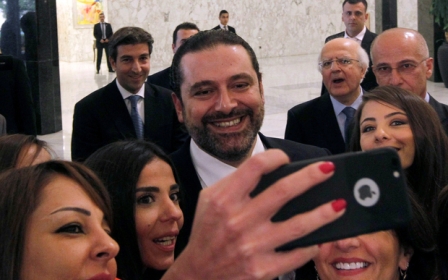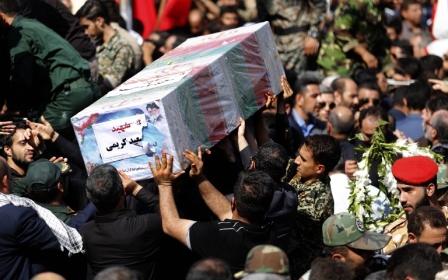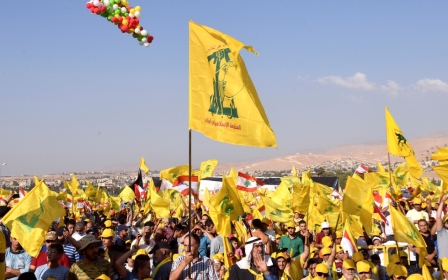Saudi-Iranian rivalry over Lebanon is far from over

High-level government visits to Beirut in recent days show that the Saudi-Iranian rivalry over Lebanon is far from over.
On 10 February, Iranian Foreign Minister Mohammad Javad Zarif arrived in Beirut for a two-day visit, during which he made a number of military and economic offers. This was followed on 12 February by a visit from Saudi royal envoy Nizar al-Aloula, which Lebanese media reported as being a direct response to Zarif’s visit.
The move indicates that Saudi Arabia wants to send Iran a message: Riyadh has not yet given up on Lebanon.
Rollercoaster ride
Over the past two years Saudi-Lebanese relations have been a rollercoaster ride. In November 2017, Saudi Arabia pressured Lebanese Prime Minister Saad Hariri to announce his resignation during a visit to Riyadh, citing threats from Hezbollah and Iran. Riyadh also advised its citizens not to travel to Lebanon, a warning that has only just been lifted.
Iran and its Lebanese allies have taken advantage of the situation by emphasising that Saudi Arabia's actions represented interference in Lebanese affairs.
Over the past two years Saudi-Lebanese relations have been a rollercoaster ride
Hariri's eventual dramatic return to Lebanon from Riyadh, and his participation in the ensuing parliamentary elections last May, marked a turning point, as Saudi Arabia recognised that standing up to Iran in Lebanon would be better accomplished through engagement on the ground.
Although Hariri gained more popular support in Lebanon after the 2017 Riyadh episode - as many across the political spectrum saw him as upholding Lebanese sovereignty in the face of Saudi pressure - his party lost seats in the May elections. This reduced Hariri's bargaining power with his political rivals, by extension reducing Saudi influence.
Intimidation and alliances
Iranian-Lebanese relations, on the other hand, have been comparatively consistent. Hezbollah has always been Iran's trusted ally in Lebanon. Its pragmatic alliances with actors such as the Free Patriotic Movement have given it more leverage.
The May elections gave Hezbollah and its allies more parliamentary seats than before, which they used to request concessions from the Hariri camp.
The Hariri camp itself was divided. The March 14 alliance that formed in the aftermath of the assassination of former prime minister Rafik Hariri - and which brought together Hariri's Future Movement, the Lebanese Forces and the Kataeb Party - gradually unravelled amid internal disagreements and external pressure by its March 8 rivals.
By 2017, the Lebanese Forces in particular had grown fed up with Hariri's political and economic concessions to his political rivals. With Saudi Arabia sharing that frustration, the March 14 coalition became nominal.
Government formation
Externally, Hezbollah and Iran in Syria were performing better than the Syrian opposition, which was partially supported by Saudi Arabia. Riyadh's hopes for regime change in Syria were thwarted by Russia's intervention in 2015 and the lack of action by Western countries, particularly the US.
Saudi Arabia found itself with a Syria heading towards increasing Iranian influence and a Lebanon facing the same fate, as Hezbollah used its gains in Syria to assert itself further back home.
Lebanon's post-election government formation process was one of Saudi Arabia's few remaining avenues to stand up to Iran in the country. Both Riyadh and Tehran instructed their Lebanese allies not to give concessions to the other side in negotiations over the cabinet.
This external pressure, coupled with internal rivalries and calculations by Lebanese parties, led to the stalling of the government formation process for nine months. The cabinet that was eventually announced, billed as a national unity government led by Hariri, is perceived to be dominated by Hezbollah and its Christian allies - another blow to Saudi Arabia.
Zarif's visit in the aftermath of the cabinet formation, and his declaration from Beirut that Iran was ready to support the government in any way, was a further stab at Saudi Arabia. Hezbollah leader Hassan Nasrallah took the opportunity to renew his call for the Lebanese Armed Forces to accept air defence systems from Iran, considered a red line by Saudi Arabia and the US.
Vague promises
Aloula's visit, right after Zarif's, can therefore be seen as a message from Saudi Arabia that, despite its setbacks, it has not washed its hands of Lebanon. But the question remains: what will Saudi Arabia do in concrete terms to regain a degree of influence in Lebanon?
Lebanon's post-election government formation process was one of Saudi Arabia's few remaining avenues to stand up to Iran in the country
One indicator would be reactivating the $4bn in security assistance that Saudi Arabia cancelled in 2016 after Lebanon's "non-condemnation" of attacks against the Saudi embassy in Iran. Another would be investing in Lebanese treasury bonds, something that Lebanese Foreign Minister Gebran Bassil called for at Davos in January.
Aloula announced from Beirut that more than 20 agreements with Lebanon would be activated. So far, however, all Saudi officials have given are vague statements on supporting Lebanon "all the way".
The views expressed in this article belong to the author and do not necessarily reflect the editorial policy of Middle East Eye.
This article is available in French on Middle East Eye French edition.
Middle East Eye propose une couverture et une analyse indépendantes et incomparables du Moyen-Orient, de l’Afrique du Nord et d’autres régions du monde. Pour en savoir plus sur la reprise de ce contenu et les frais qui s’appliquent, veuillez remplir ce formulaire [en anglais]. Pour en savoir plus sur MEE, cliquez ici [en anglais].



